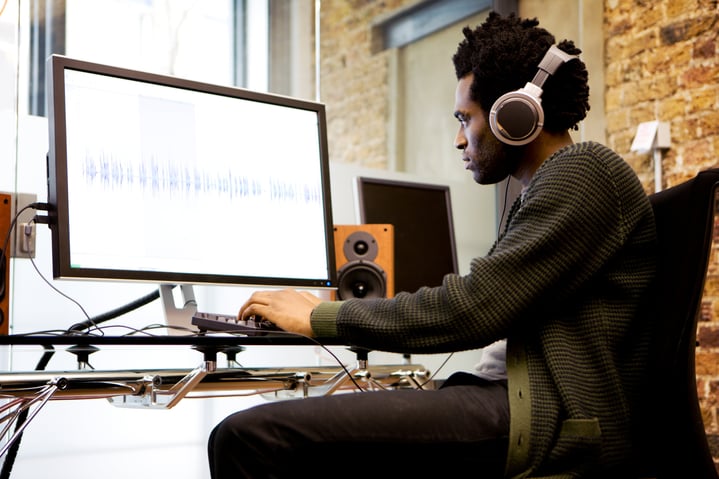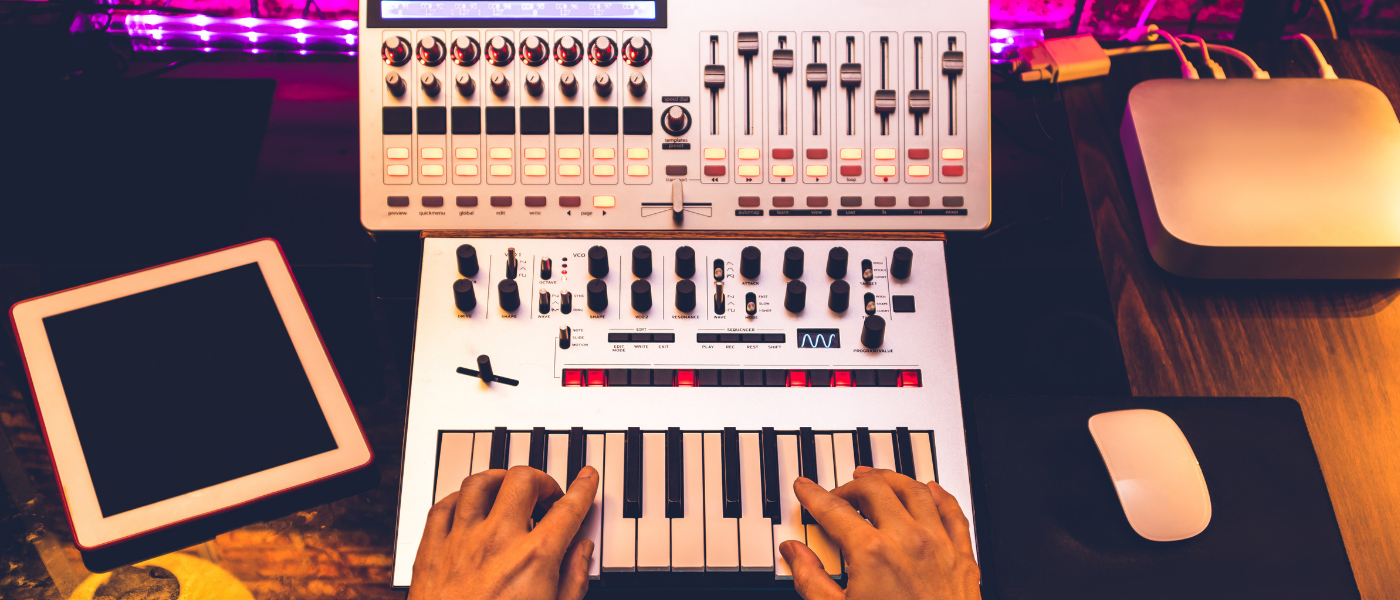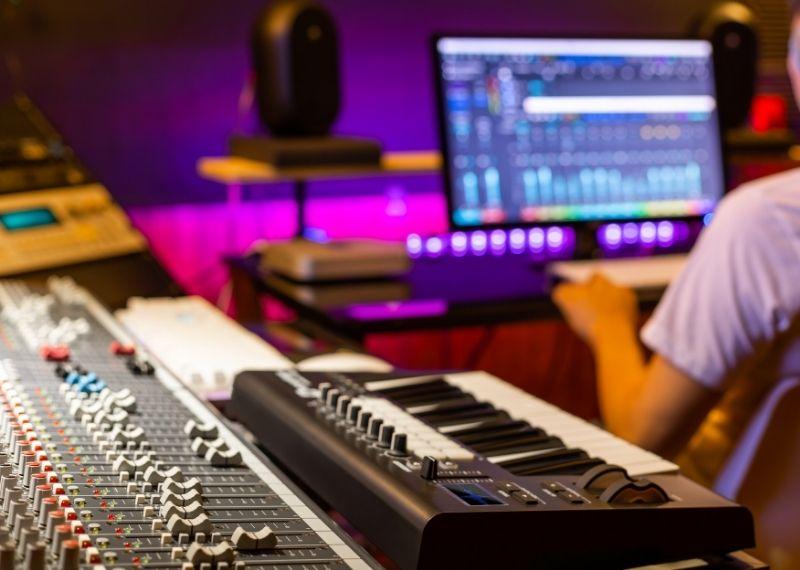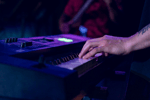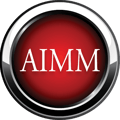What Equipment Do You Need for a Home Recording Studio?
Welcome to the exciting journey of setting up your home recording studio!
This venture goes beyond crafting a space for optimal sound quality; it's about selecting the right equipment to make your audio dreams a reality.
While professional recording studios feature gear worth thousands, you can build the home studio of your dreams without breaking the bank.
With just five essential pieces of equipment, you can create a high-quality, functional studio, even on a tight budget, without spending thousands of dollars.
Let's explore these key items that will form the foundation of your efficient and versatile home recording space.
Table of Contents:
How Can I Make a Home Recording Studio?
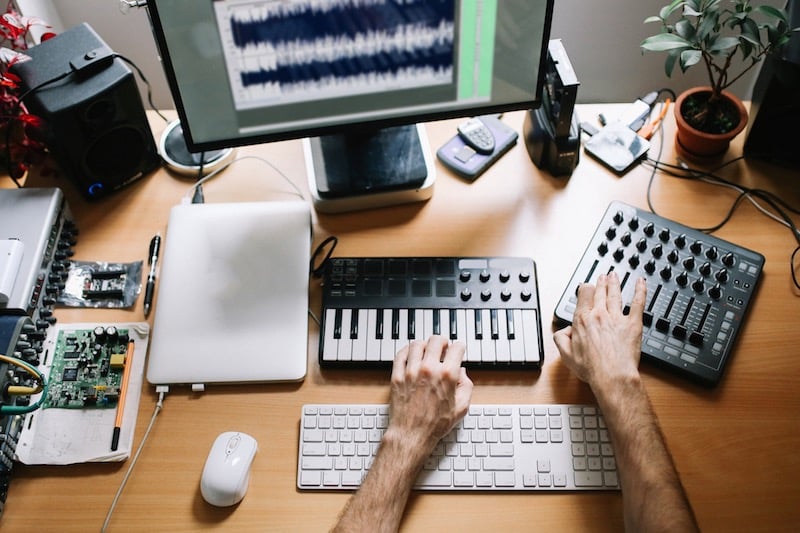
1. Computer
The cornerstone of any home recording studio is undoubtedly the computer.
It's not just a basic necessity; it's the central hub where all elements of your music projects come together.
If you're just starting out, you can use a computer you already have to manage initial costs, because this can often be one of the more expensive pieces of recording studio equipment.
If you're contemplating an upgrade or a new purchase, Mac computers are frequently recommended for studio setups.
Despite their higher price point, Macs are renowned for their seamless compatibility with a wide range of studio equipment and recording software, offering a smoother, more integrated experience.
This can be particularly beneficial in avoiding the compatibility issues sometimes encountered with PCs.
Industry favorites like the MacBook Pro, MacBook Air, iPad, and Mac Mini are all excellent choices.
Each of these models is known for their reliability and flexibility in handling various audio production tasks.
They are well-equipped to support a variety of recording software, ensuring that your recording sessions, whether you're capturing vocals, acoustic instruments, or mixing session tracks, are efficient and productive.
Remember, the right computer is not just about power; it's about creating a harmonious and efficient workflow in your home studio, ensuring that every recording session yields the highest audio quality possible.
2. Digital Audio Workstation/Audio Interface

Once your computer is locked down, you need to focus on two pivotal pieces of equipment: the Digital Audio Workstation (DAW) and the Audio Interface.
While it's possible to purchase these items separately, bundling them together often leads to cost savings and ensures seamless compatibility among your studio setup components.
The DAW is the cornerstone of your music production software, a digital system for editing, mixing, and recording your music projects. It's where all of your virtual instruments are.
It's the software environment where your creativity meets technology, allowing you to craft and refine your audio files into professional-quality tracks.
Meanwhile, the Audio Interface acts as the critical hardware bridge between your computer and the rest of your recording equipment.
It's essential for achieving high audio quality, ensuring that the sound from your microphones, instruments, and other audio sources is accurately captured and fed into your DAW.
Consider industry favorites like Apple Logic, Garage Band, and ProTools when selecting a DAW.
These platforms are renowned for their robust features, user-friendly interfaces, and versatility, catering to beginner and professional audio engineers alike.
Starting your home studio journey with the right DAW and Audio Interface lays a solid foundation for a professional recording studio experience right in your home.
This combination streamlines your recording session and guarantees you have the necessary tools to produce clear, uncolored sound, whether you're recording vocals, acoustic instruments, or mixing session tracks.
3. Headphones and Studio Monitors
When setting up your home studio, knowing the difference between closed-back and open-back headphones is crucial for achieving the best audio quality in your music projects.
Closed-back headphones, known for their sound isolation, are ideal for tracking sessions, allowing you to focus on each note and beat without external noise interference.
On the other hand, Open-Back headphones, celebrated for their uncolored sound and natural feel, are more suited for the mixing phase, offering an accurate representation of your recording.
Closed-back headphones are fundamental equipment for beginners setting up their first studio.
While Open-Back headphones are valuable for more nuanced mixing sessions, initial mixing can be effectively handled with quality studio monitors.
Speaking of studio monitors, these are not your average consumer speakers.
Designed to provide a flat frequency response, studio monitors are a cornerstone in your recording studio equipment list, enabling you to hear your recordings with clear, accurate sound, free from artificial enhancements.
This accuracy is vital for making precise adjustments during mixing sessions.
Studio monitors come in two main types: active and passive. Active Studio Monitors are self-contained units with built-in amplifiers and crossovers, making them a convenient, all-in-one solution.
Passive Studio Monitors, while offering flexibility in customization, require separate amplifiers and crossovers.
When opting for Passive monitors, ensure they are compatible with your existing studio equipment to achieve the best sound quality.

4. Microphones
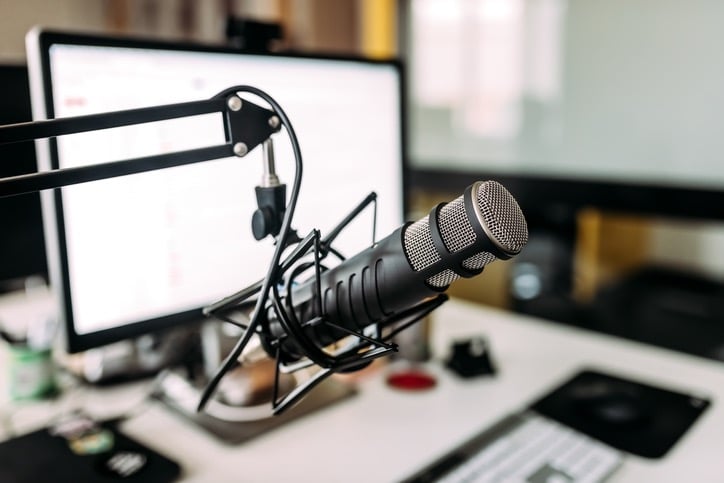
Navigating the diverse world of microphones is a crucial first step in setting up your home recording studio.
With countless options available, from USB and Condenser to Dynamic, Ribbon, and Drum microphones, selecting the right type of microphone is essential based on your recording needs.
For beginners venturing into home recording, starting with a single, versatile microphone often suffices.
If your focus is primarily on vocal recording, a condenser microphone, known for its sensitivity and flat frequency response, is an excellent choice.
These condenser mics are ideal for capturing the nuances of the human voice, making them a favorite in recording studios.
On the other hand, if your music projects involve recording vocals and instruments, a dynamic microphone is a better option.
Renowned for their durability and ability to handle high sound pressure levels, dynamic mics are perfect for recording loud instruments and diverse sound sources.
However, studio microphones are just part of the equation.
Essential accessories like a microphone stand and a pop filter are indispensable for a professional recording studio setup.
A flexible boom-style stand is ideal for optimizing your studio space for various recording situations, whether capturing the intricate details of acoustic guitars or the powerful vocals of a singer.
The role of a pop filter cannot be overstated.
Positioned between the microphone and the performer, it significantly enhances audio quality by mitigating the harshness of plosive sounds – those troublesome 'P's and 'B's.
It also protects your valuable microphone from moisture and ensures a clean, uncolored sound in your recording session.
Check out our list of the Top 5 Dynamic Microphone Brands.
5. Cables
Proper cables are the last essential part to look for as you set up your home recording studio.
Just like you need proper instrument cables, you also need proper cables for your studio.
While a more advanced studio setup might require an extensive array of cables, beginners can start with the essentials: XLR cables.
Initially, you'll need three XLR cables: two short ones, each about 6 feet long, and a longer one, approximately 25 feet.
These cables are fundamental in connecting your studio equipment, ensuring a seamless flow of audio signals across your setup.
The shorter XLR cables are typically used to connect your studio monitors, which is vital for accurate sound monitoring during recording sessions.
The longer cable is essential for connecting your microphone, whether you're recording vocals, acoustic instruments, or electric guitars, ensuring flexibility and ease of movement in your studio space.
Remember, the quality of your cables can significantly impact the sound quality of your recordings. Investing in durable and reliable XLR cables is a step towards achieving professional-grade audio production in your home studio.

Your Home Studio Journey Begins Here
Now you're equipped with the knowledge of the five key pieces of studio equipment, that are all budget options, needed to create a high-quality home recording studio.
With the right audio interfaces, studio monitors, microphones, headphones, and acoustic panels, you're well on your way to producing professional-level audio right from home.
Now all you need is a comfortable studio chair to round out your studio essentials, and you'll be all set!
If you're contemplating a deeper dive into the music industry or unsure if setting up a personal studio aligns with your career goals, we've got you covered.
Explore the world of music production and audio engineering further with AIMM, your gateway to a comprehensive music education.
Based in Atlanta, our music school offers you hands-on experience with state-of-the-art recording studio equipment, guiding you through music production's technical and creative aspects.
Click the link below to discover how AIMM can elevate your music career, whether you're aiming to become a sound engineer, a music producer, or an audio wizard in your own right.
Let's turn your passion for music into a thriving profession.
